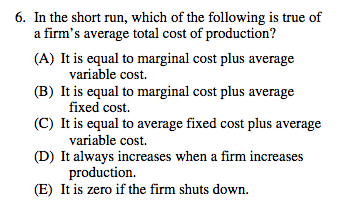Friday, November 28, 2014
Tuesday, November 25, 2014
Government Intervention Cheat Sheet
Government Intervention Cheat Sheet
A cheat sheet is no replacement for doing all of the FRQ's on Government Intervention, go to the AP's exam website and do all of the FRQ's. AP Microeconomic Exam
Tariff - (World Price) - 20014, 2012, 2004, 2004B, 2003B
Price Ceiling - 2006B
Price Floor - ?
Per Unit Tax -2010, 2005, 2004
Subsidy - 2005B
Monday, November 24, 2014
Market Failure Cheat Sheet
Externality Cheat Sheet
meet-up tonight at 6pm in Stanley @ Pacific Coffee
http://www.meetup.com/Hong-Kong-AP-Economics/
Welcome if you are in HK.
Externality Check list,
When crafting a diagram, make sure that all necessary parts are added for the readers.
I made this checklist for the IB exams but it works equally well for the AP.

Elasticity Cheat Sheet 1 (PED, TR, PES)
Elasticity Cheat Sheet 1 (PED, TR, PES)
Sunday, November 23, 2014
Demand & Supply - Cheat Sheet
Demand & Supply - Cheat Sheet
I haven't in the past actually created a cheat sheet for the Demand & Supply section of the AP economics course. Anyway here it is,, will update it with my own graphs over time.
Thursday, November 20, 2014
Efficiency and the Relationship between Price & Marginal Costs
Efficiency
Productive Efficiency - goods are produced in the least costly way.
Allocative Efficiency – where the right amount (according to society) is produced.
Allocative Efficiency P = MC , MC = P
· Money price is society’s measure of the relative worth of the unit. (price is the benefit)
· An additional unit of a products value must include what could possibly have been made (opportunity cost)
If price is equal to marginal cost then the right goods (according to society) are being produced.
Under-allocation P > MC , MC < P
If price is more than the marginal cost there is an underproduction of goods (society wants more). Society values more of what is being produced than what could alternatively be produced with the same resources.
Over-allocation P < MC , MC > P
If price is less than marginal cost there is an overproduction of goods (society wants less). Society values what could be produced alternatively than how the resources are being presently used.
Notice, that the price is the same as Demand and Price are the same for Perfect Competition.
- Quantity of production (output) is what you should focus on,,, as we produce more (Q3) than the price consumers are willing to pay or marginal costs increase quickly. We are overproducing in relation to the price.
- If the price (quantity produced at that price, Q1) is above our marginal costs we are not at an allocatively efficient quantity,, we are underproducing.
Perfect Competition (2000) Multiple Choice
Perfect Competition (2000) Multiple Choice
2000
2000
#3 - E
#8 - C
#23 - B
#24 - B
#25 - C
#26 - E
#39 - C
#47 - C
#54 - A
Output & Costs (1995,2000,2005,2008) Multiple Choice
Output & Costs (1995,2000,2005,2008) Multiple Choice
1995
2000
2005
2008
1995
#6 – C
#7 – D
#8 – A
#22 – E
#52 – B
2000
#6 – C
#7 – E
#22 – C
#36 – E
#37 – C
#38 – B
2005
#6 – A
#8 – A
#10 – B
#21 – E
#36 – B
#37 – A
#51 – B
#52 – D
#54 – A
2008
#6 – C
#23 – C
#36 - B
#37 – C
#50 - C
Government Intervention (1995,2000,2005,2008) Multiple Choice
Government Intervention (1995,2000,2005,2008) Multiple Choice
1995
2000
2005
2008
1995
#3 - A
#15 - A
#50 - E
2000
#18 - B
#19 - C
#27 - B
#45 - B
#49 - B
#57 - E
2005
#4 - C
#15 - C
#18 - C
#44 - A
2008
#3 - D
#14 - C
#32 - A
#43 - A
#44 - B
#60 - B
Subscribe to:
Comments (Atom)





























































